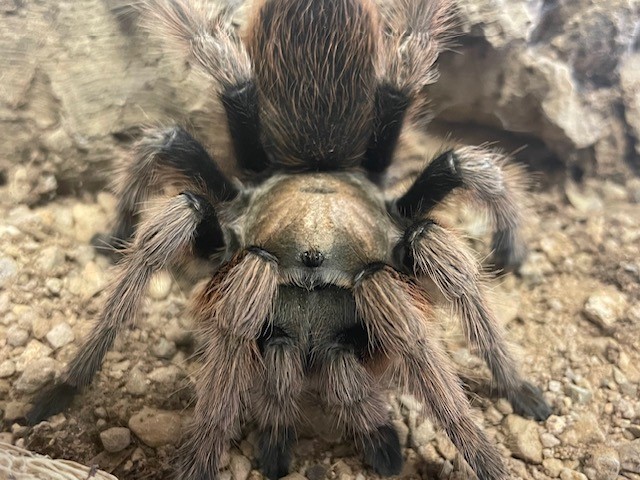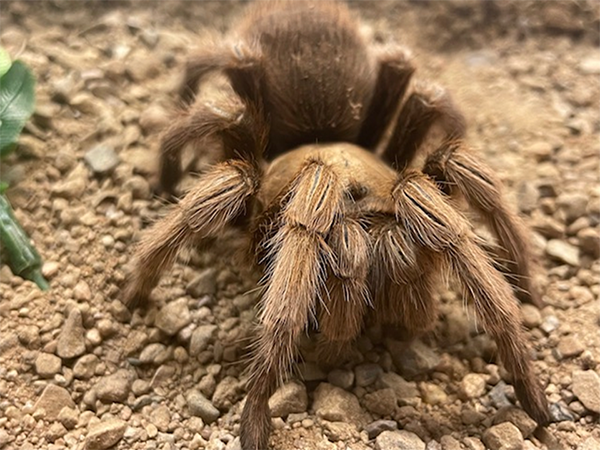Desert Blonde Tarantula

About
What has eight legs and lives in a burrow in the Sonoran Desert? The desert blonde tarantula! This hairy spider can grow to have a leg span of about 5 inches with mature females typically being noticeably larger than males. Most of the time you can find these critters in web-covered burrows waiting for their food to trip over the silk near the entrance.
Adaptations
Due to their coloration, these spiders can camouflage into their environment. Females are stocky with light brown coloration and tan legs that have some dark areas closer to their body. Males have a slender dark brown body and lanky dark legs. This tarantula is covered in tiny hairs and will use their back legs to fling the itchy hairs on their abdomen into the faces of predators. These special hairs are called urticating hairs. Desert blonde tarantulas also have fangs that they will use to inject venom into their prey. These arachnids are typically nocturnal which allows them to avoid the heat of the day.
Food Web
Desert blonde tarantulas are insectivores — they only eat invertebrates and are an important part of the food web. They are a predator to insects like crickets, beetles, grasshoppers, cicadas, and caterpillars. They will also hunt lizards and arachnids that are smaller than them.
They are preyed upon by many different animals including birds, coyotes, foxes, and reptiles like lizards and snakes. However, their most famous predator is the tarantula hawk (or pepsis wasp).

Habitat and Range
Desert blonde tarantulas can be found within the deserts of Arizona, New Mexico, Southern California, and Mexico. They are well suited to living in variable weather conditions with little water.
iNaturalist records of Desert Blonde Tarantula (Aphonopelma chalcodes) as of March 8, 2024

Family Life
Much like how a snake sheds its skin as it grows, tarantulas must shed their exoskeleton throughout their lives in a process called molting. Both male and female tarantulas mature when they are 8-10 years old, but males tend to die 2-3 years later around the age of 10-12 while females can live upwards of 20 years. There have been some female desert blonde tarantulas that have lived over 25 years in human care! Each year, males emerge during summer rains (July, August, and September) in search of a mate. They are especially vulnerable during this time to heat, cold, and predation (especially from the female tarantulas that they are trying to mate with). Females lay between 2-100 eggs and fewer than 5% of the baby spiders will survive into adulthood.
Glossary
- Camouflage:
- The ability to hide or disguise the presence of an animal or person. To blend into the surrounding area.
- Urticating:
- Causes a prickling or singing sensation.
- Nocturnal:
- Awake at night and asleep during the day.
- Insectivore:
- Animal that only eats only insects.
- Exoskeleton:
- A skeleton on the outside of an animal that provides structure and protection.
- Pedipalps:
- Arms on arachnids that are used to help sense the world around them.
Fun Facts
- They have 8 legs, 2 pedipalps, and 8 eyes.
- They are known by a variety of names like Arizona desert blond, Mexican blond tarantula, desert blond tarantula, or even the Western desert tarantula.
Conservation
Desert blonde tarantulas are not threatened or endangered.
At The Museum

Check out our exhibit tarantulas in the Reptile and Invertebrate Room.
